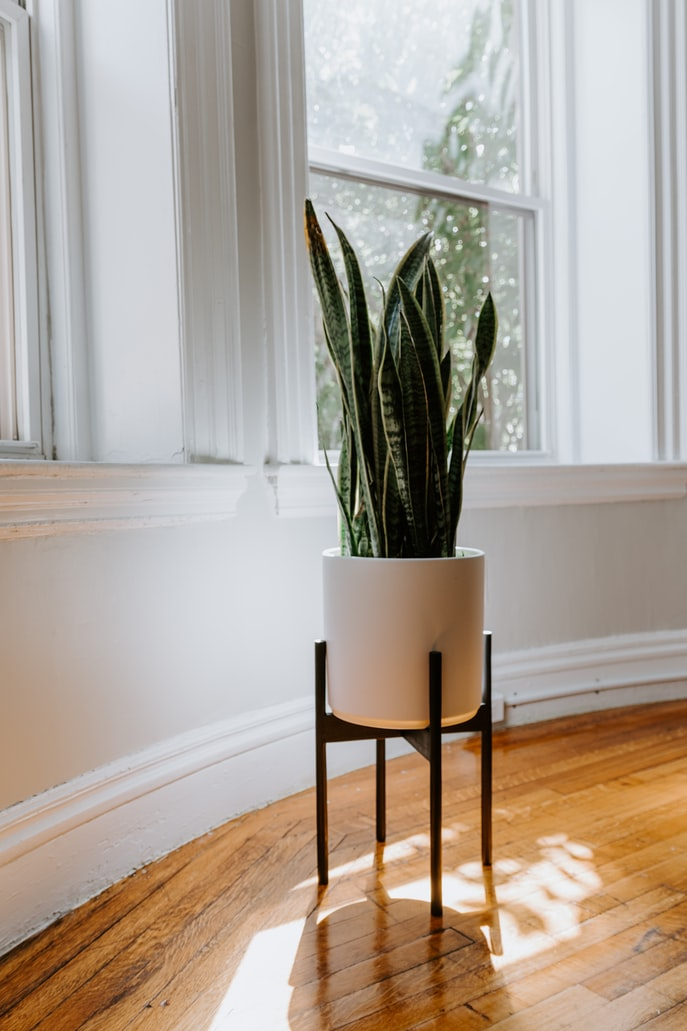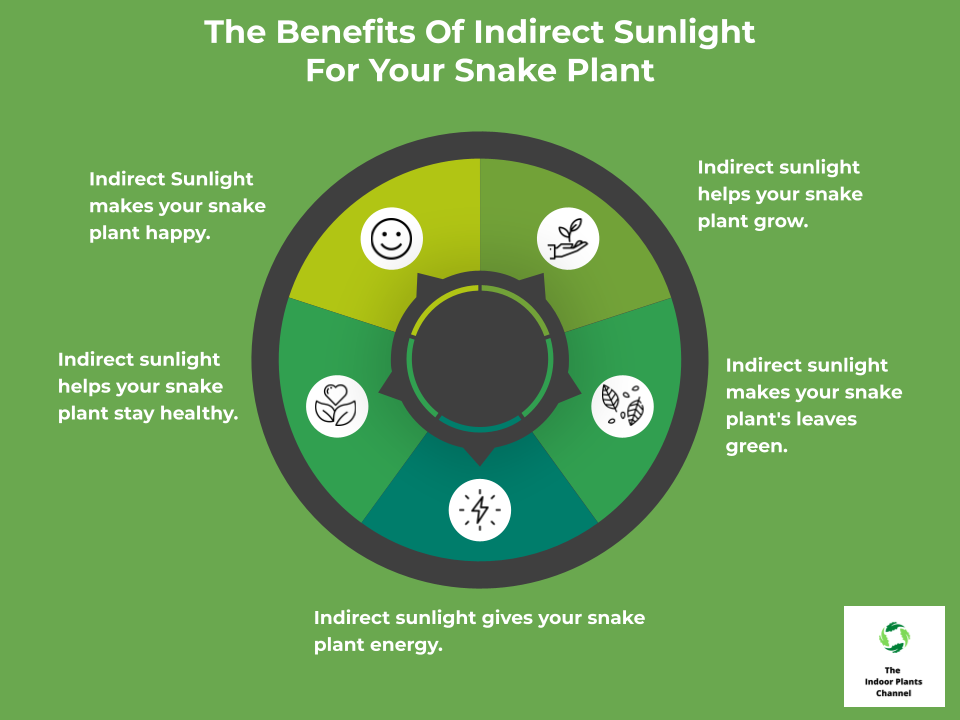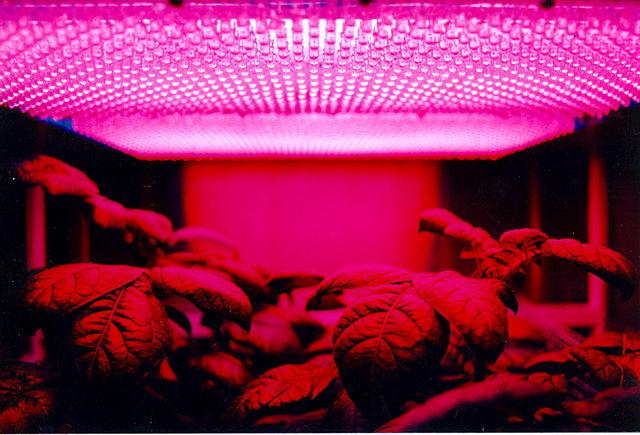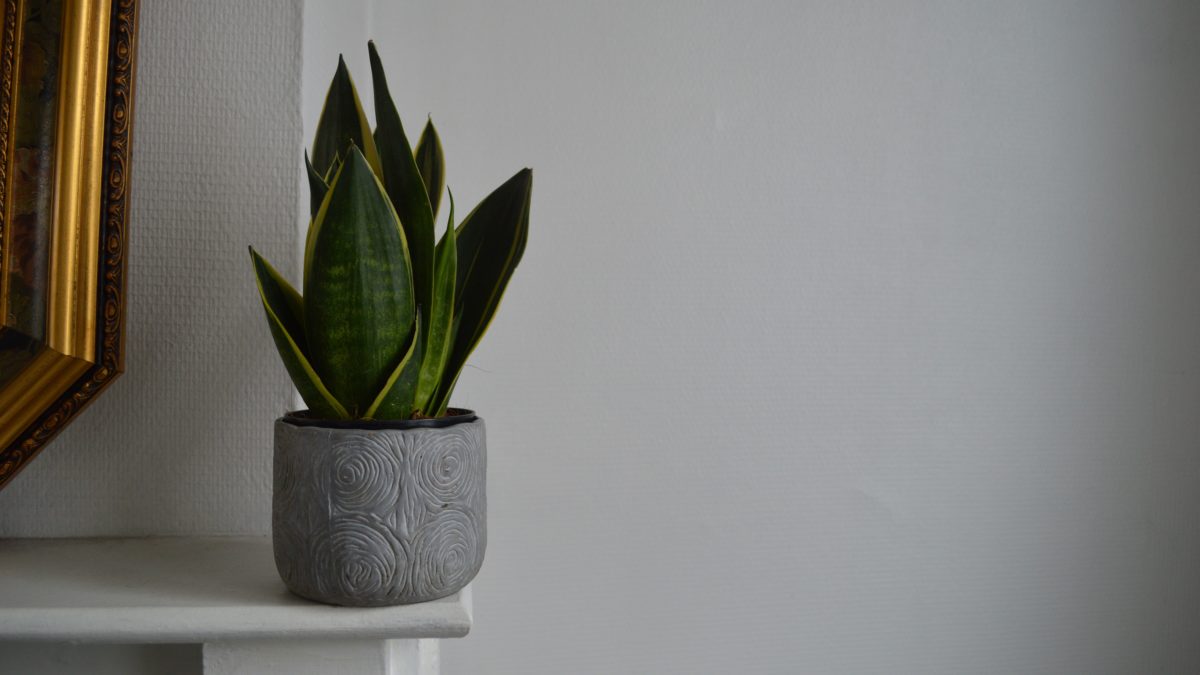If you have a snake plant, or are thinking about getting one, you might be wondering how much sunlight it needs. In this blog post, we’ll share how much sunlight your snake plant needs, and what happens if it doesn’t get enough.
Sunlight And Your Snake Plant
Your snake plant does not need direct sunlight, but it does need bright indirect light. Snake plants can tolerate low light, but they will grow slower and produce fewer flowers. If you want your snake plant to grow quickly and produce lots of flowers, give it bright indirect light.

How Much Sunlight Does Your Snake Plant Need?
Assuming you have a healthy snake plant, it should be able to tolerate lower light levels. However, if you want your snake plant to thrive, it’s best to give it bright, indirect sunlight.
If you’re not sure what bright, indirect sunlight means, it means that the sun should never be directly hitting the leaves of your snake plant. The best way to provide bright, indirect sunlight is to place your plant near a south or west-facing window.
If you don’t have a south or west-facing window, you can also place your snake plant under a grow light. Just make sure that the light is not too close to the plant, as this can cause the leaves to burn.
In general, snake plants do best in bright, indirect sunlight. But if you can’t provide this, don’t worry – your plant will still do fine in lower light levels.
The Benefits Of Sunlight For Your Snake Plant
Your snake plant will do best if it receives some direct sunlight each day. The benefits of sunlight for your snake plant include:
• Stimulating growth – Sunlight helps your snake plant to grow and stay healthy.
• Keeping the leaves clean – Sunlight helps to keep the leaves of your snake plant clean and free of dust.
• Improving the plant’s appearance – Sunlight makes the leaves of your snake plant look more vibrant and green.
So, make sure your snake plant gets some sun each day!

How To Get The Right Amount Of Sunlight For Your Snake Plant
If you want your snake plant to thrive, it’s important to give it the right amount of sunlight. Here’s how to make sure your snake plant gets just the right amount of sun:
First, you’ll need to know where your snake plant is going to be placed. If it’s going to be in a spot that doesn’t get a lot of sunlight, you’ll need to give it extra light by using grow lights.
Grow lights come in different shapes and sizes, but they all provide the same type of light that plants need to grow. You can find grow lights at your local hardware store or online.
To use a grow light, set it up so that it’s about 6-12 inches above the plant. Leave the light on for 12-14 hours per day. If you’re using a grow light, you won’t need to water your plant as often as you would if it were in a sunny window.
Once you know where your snake plant is going to be placed, you can start to experiment with the amount of sunlight it gets. Put it in a spot where it gets a little bit of sun at first, and then gradually move it to a spot where it gets more sun.
Pay attention to your snake plant as you move it around. If it starts to look unhealthy, that means it’s not getting enough sun. Move it to a sunnier spot.
On the other hand, if your snake plant starts to get sunburned, that means it’s getting too much sun. Move it to a spot with less sun.
With a little bit of trial and error, you’ll be able to find just the right spot for your snake plant. And once you do, your snake plant will be healthy and happy!

Signs That Your Snake Plants Aren’t Receiving Enough Sunlight
If your snake plant is not receiving enough sunlight, there are a few things you can look for:
- The leaves of the plant may start to turn yellow, and may even develop brown spots.
- The plant may start to grow taller and leggier, with fewer leaves.
- The plant may become more susceptible to pests and diseases.
So if you notice any of these changes in your snake plant, it’s a good idea to move it to a spot where it will get more sunlight. If you can’t do that, try supplementing with artificial light. You can use a grow light or fluorescent light to give your plant the extra light it needs.
Signs That Your Snake Plants Are Receiving Too Much Sunlight
Snake plants are generally pretty tolerant of different light conditions, but they can get sunburned if they’re exposed to too much direct sunlight. The leaves of a snake plant that’s getting too much sun will start to turn yellow, and the edges of the leaves will start to turn brown and curl up. If you see these signs, move your snake plant to a spot that gets a little less sun.
In general, snake plants do best in bright, indirect light. But they can tolerate low light conditions and even some direct sun, as long as they’re not in direct sunlight for too long. If you start to see the signs mentioned above, it means your snake plant is getting too much sun and you should move it to a spot that gets a little less sun.\
The Dangers Of Direct Sunlight For Snake Plants
Snake plants are native to Africa, where they grow in shady areas. In the wild, they are often found growing under trees or in rocky crevices. Snake plants need very little sunlight to survive and will actually do better in low-light conditions.
Too much direct sunlight can be harmful to snake plants. The leaves can get sunburned, which will cause them to turn brown and eventually die. If you notice your snake plant leaves starting to turn brown, move the plant to a shadier spot.
In addition to sunburn, snake plants can also suffer from heat stress when they are in direct sunlight. This can cause the leaves to wilt and the plant to dry out. If your snake plant is wilting, move it to a cooler location or provide it with some additional shade.
If you live in an area with very hot summers, it is best to grow snake plants in a shady spot or indoors where they will be protected from the harsh sun. With proper care, your snake plant will thrive and provide you with years of enjoyment.”
Quick Tips
- Your snake plant does not need a lot of sunlight to thrive.
- Place your snake plant in an area that receives indirect sunlight.
- If you notice your snake plant’s leaves beginning to yellow, it is getting too much sun.
- Move your snake plant to a shadier spot.
- Snake plants are tolerant of a wide range of light conditions, so don’t be afraid to experiment to find the perfect spot for yours.
- Remember that the amount of sunlight your snake plant needs may change depending on the time of year.
- If you have any questions about how much sunlight your snake plant needs, ask a qualified expert.
Conclusion
If you’re looking for a low-maintenance houseplant that is virtually indestructible, the snake plant is a great option. However, it’s important to know how much sunlight your snake plant needs in order to thrive. Too much sun can scorch the leaves, while too little sun will cause the plant to become etiolated, or stretchy. The best place for your snake plant is in a spot that receives bright, indirect light. With the right amount of sunlight, your snake plant will thrive and bring a touch of the tropics to your home.
Michelle Wilde
Related posts
5 Comments
Leave a Reply Cancel reply
![]()
About Michelle Wilde
Michelle Wilde is a stay-at-home mom and avid plant lover. Armed with a post-graduate degree in Computer Science (no kidding!), she loves researching plants and landscapes. When she is not caring for her 4 kids, she spends time on her passion for plants. She blogs at www.indoorplantschannel.com, the trusted source for indoor plants.
Learn more
Subscribe
* You will receive the latest posts and updates about indoor plants!
Search
Recent Posts
Categories
- Beginner Guides (10)
- FAQ (206)
- General (2)
- How-To Guides (212)
- Indoor Plants (214)
- Pest Management (2)
- Plant Problem Solutions (4)
- Seasonal Growing (2)
- Specialized Environments (2)
- Specific Plant Care (3)
- Technical Growing (2)

[…] of sunlight a plant gets can affect its growth? In this blog post, we’ll explore the relationship between sunlight and plant growth, and how you can use this information to help your plants […]
[…] Snake plants are also very tough and can withstand a lot of neglect. This plant is a great option for busy people or those who forget to water their plants regularly. […]
[…] of the best plants for inducing sleep is the indoor plant known as the “snake plant”. The snake plant is known for its ability to produce oxygen at night, making it the perfect plant to have in your […]
[…] plants are very tolerant of neglect and can even thrive in low-light conditions. However, they can get quite large, so make sure you have enough space for them to […]
[…] watering it again. It is best to water it about once a week. Snake plants prefer bright, indirect sunlight. You can place it near a window where it will get plenty of light without being in direct […]